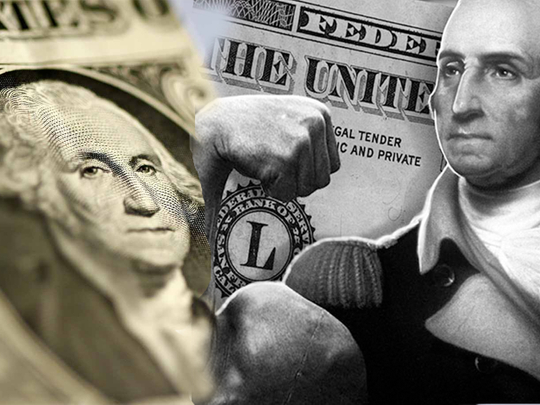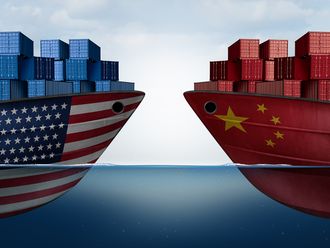
For a very long time, if you asked US government officials their view on the value of the dollar, they would almost certainly decline to answer. “The currency is the purview of the Treasury secretary,” they’d say.
If you asked the Treasury secretary his view of the dollar, the answer would be equally rote: “A strong dollar is in the interest of the US.”
Those words have been so standard that when Paul O’Neill deviated from it in an interview with a German newspaper in 2001, he caused a kerfuffle in global currency markets and quickly backtracked. The Trump administration looks to be taking a different approach. Officials, including the president himself, have been breaking tradition and talking about currency markets — and in many cases, suggesting that the dollar is too highly valued.
But the Trump administration has also offered contradictory signals about just what it wants to see happen on currency markets, with tension building between the administration’s stated goals and the policies it says it advocates. Both before and since the inauguration, President Donald Trump has weighed in on currency issues more than any of his recent predecessors.
“Our dollar is too strong,” he said in an interview with “The Wall Street Journal” in mid-January. “And our companies can’t compete” because the currency is too strong. “It’s killing us,” he said.
Trump enlarged on this theme in comments last week at a meeting with pharmaceutical executives. “We know nothing about devaluation,” he said. “Every other country lives on devaluation. You look at what China’s doing, you look at what Japan has done over the years — they played the money market, they played the devaluation market, and we sit there like a bunch of dummies.”
Taking the president’s words at face value, we would seem to be in for a deliberate effort by the administration to reduce the value of the US currency relative to its neighbours, in hopes of giving US exporters an advantage and reducing the trade deficit. That is also the tone that Peter Navarro, the director of the White House’s national trade council, struck in an interview with “The Financial Times”.
He described the euro as “grossly undervalued”, which would imply that the dollar is too strong against the world’s other most widely used currency. Steven Mnuchin, the Treasury secretary nominee, has tried to take a more balanced approach to talking about the valuation of the dollar. While trying not to undercut his boss, he has made the point that over the longer run a strong domestic economy will cause the dollar to increase in value.
“The currency is very, very strong, and what you see is people from all over the world wanting to invest in the US currency,” Mnuchin said in his confirmation hearing. “I think when the president-elect made a comment on the US currency, it was not meant to be long-term comment. It was meant to be that perhaps in the short term, the strength in the currency as a result of free markets and people wanting to invest here may have had negative impacts on — on our ability in trade.”
But even that nuanced thought from Mnuchin is in tension with the concrete outcomes in the currency markets that are resulting from his administration’s policies. For example, Sean Spicer, the president’s press secretary, suggested that a policy known as the “border adjustment tax” would be a way to force Mexico to pay for a border wall. But that policy’s adherents believe it would actually increase the value of the dollar on currency markets by perhaps 20 per cent. (And if it doesn’t, the tax would hit US consumers and retailers hard.)
Wilbur Ross, the commerce secretary nominee, urged a renegotiation of the North American Free Trade Agreement. Those comments, at his confirmation hearing, prompted a sell-off of the Canadian and Mexican currencies.
And more broadly, if the administration’s plan to cut taxes and increase infrastructure comes to fruition, it implies that interest rates in the US will be higher than they otherwise would be. Higher interest rates will bring global investors, with their assets, flocking into the US and propel the dollar even higher.
Any administration has a range of tools it can use to influence the value of the currency. It can set trade policies, use diplomatic pressure on trading partners, make public statements and appoint people to the Federal Reserve who are inclined toward either looser money or tighter money.
So in the months ahead, the Trump administration will have to decide if it really intends to follow through on the president’s words about the need to devalue the dollar. Or it will follow the long tradition in the US of viewing a strong currency as a sign of strength, not weakness.
New York Times News Service












